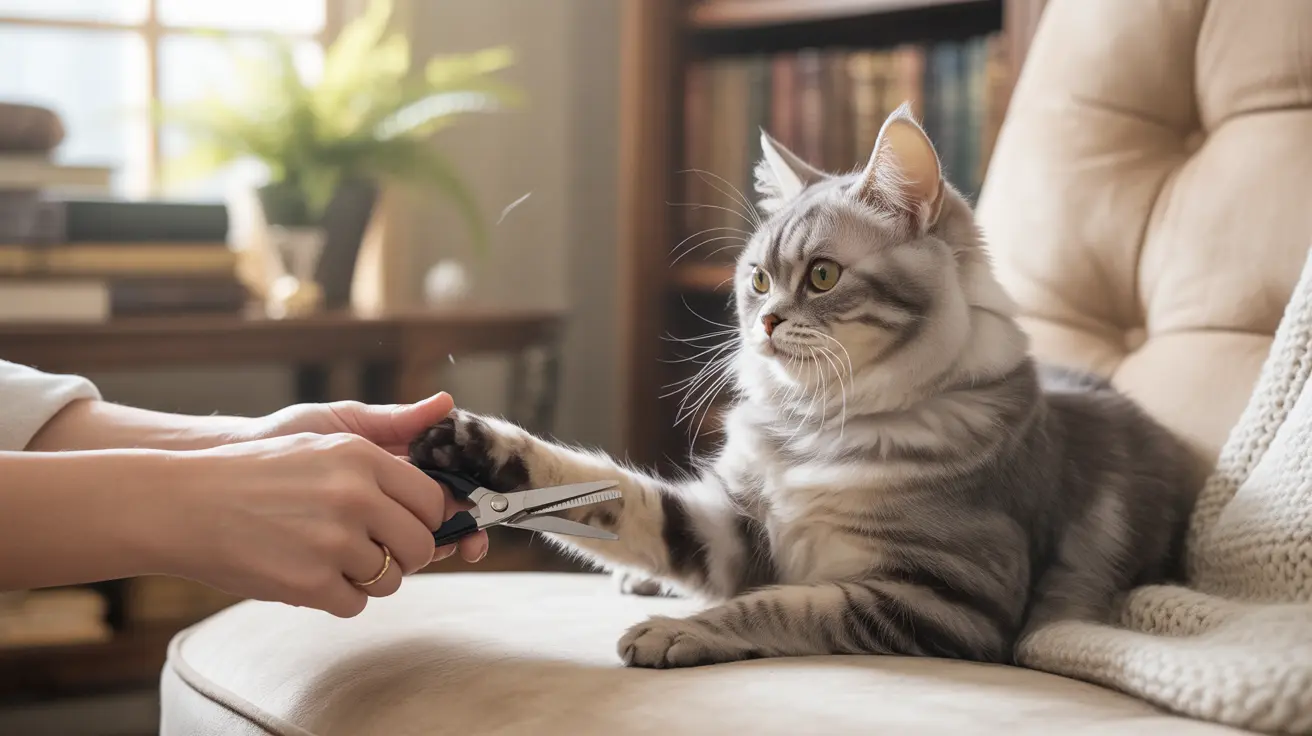Introduction
Cat pedicures are a crucial aspect of feline health care that many pet owners overlook or approach with trepidation. Regular nail maintenance isn't just about protecting your furniture – it's essential for your cat's comfort, mobility, and overall wellbeing. Whether you're a new cat parent or looking to improve your grooming routine, understanding the proper techniques and tools for cat pedicures can make the experience stress-free for both you and your feline friend.
In this comprehensive guide, we'll explore everything you need to know about cat pedicures, from selecting the right tools to mastering proper trimming techniques and creating positive associations for your pet.
Essential Tools for Safe Cat Pedicures
Successful cat pedicures start with having the right equipment. The most important tool is a pair of specialized cat nail clippers. These come in two main styles:
- Scissor-style clippers: Ideal for precise cuts and easier control
- Guillotine-style clippers: Preferred by some for their straight-on cutting approach
Additionally, keep these supplies handy:
- Styptic powder for emergency bleeding
- Treats for positive reinforcement
- A towel for gentle restraint
- Good lighting or a small flashlight
Proper Technique for Cat Nail Trimming
Follow these steps for a safe and effective cat pedicure:
- Choose a quiet, calm environment
- Position your cat comfortably on your lap or a stable surface
- Gently press the paw pad to extend the nail
- Identify the quick (pink area containing blood vessels)
- Cut only the white tip at a 45-degree angle
- Reward your cat after each successful trim
Creating Positive Associations
Making cat pedicures a pleasant experience requires patience and positive reinforcement:
- Start with brief handling sessions without clipping
- Use high-value treats during and after trimming
- Keep sessions short and positive
- Never force or punish your cat
- Practice regularly to maintain progress
Safety Considerations and Common Mistakes
Avoid these common pitfalls during cat pedicures:
- Cutting too close to the quick
- Using dull or inappropriate tools
- Rushing the process
- Attempting to trim an agitated cat
- Forgetting to check dewclaws
Frequently Asked Questions
How often should I trim my cat's nails to prevent pain and injury?
Most cats need nail trims every 2-4 weeks, depending on their age, activity level, and scratching habits. Indoor cats typically need more frequent trimming than outdoor cats.
What are the safest tools to use for cat nail trims at home?
Purpose-made cat nail clippers are safest. Choose either scissor-style or guillotine-style clippers designed specifically for cats. Avoid using human nail clippers, which can split or crush the nail.
How can I make nail trimming less stressful for my cat?
Start with positive reinforcement training, short handling sessions, and plenty of treats. Gradually introduce the clippers and trim just one or two nails per session until your cat becomes more comfortable.
What should I do if I accidentally cut the quick and cause bleeding?
Apply styptic powder or cornstarch to the bleeding nail and apply gentle pressure. If bleeding doesn't stop within 5-10 minutes, contact your veterinarian.
Are there alternatives to regular nail trims, like soft nail caps, and how do they work?
Soft nail caps are vinyl covers that glue onto your cat's claws, lasting 4-6 weeks. While effective for preventing scratch damage, they still require regular nail maintenance and replacement.
Conclusion
Regular cat pedicures are an essential part of responsible pet care. With the right tools, technique, and patience, you can make nail trimming a stress-free routine for both you and your cat. Remember to always prioritize your cat's comfort and safety, and consult a professional groomer or veterinarian if you need additional guidance or assistance.






